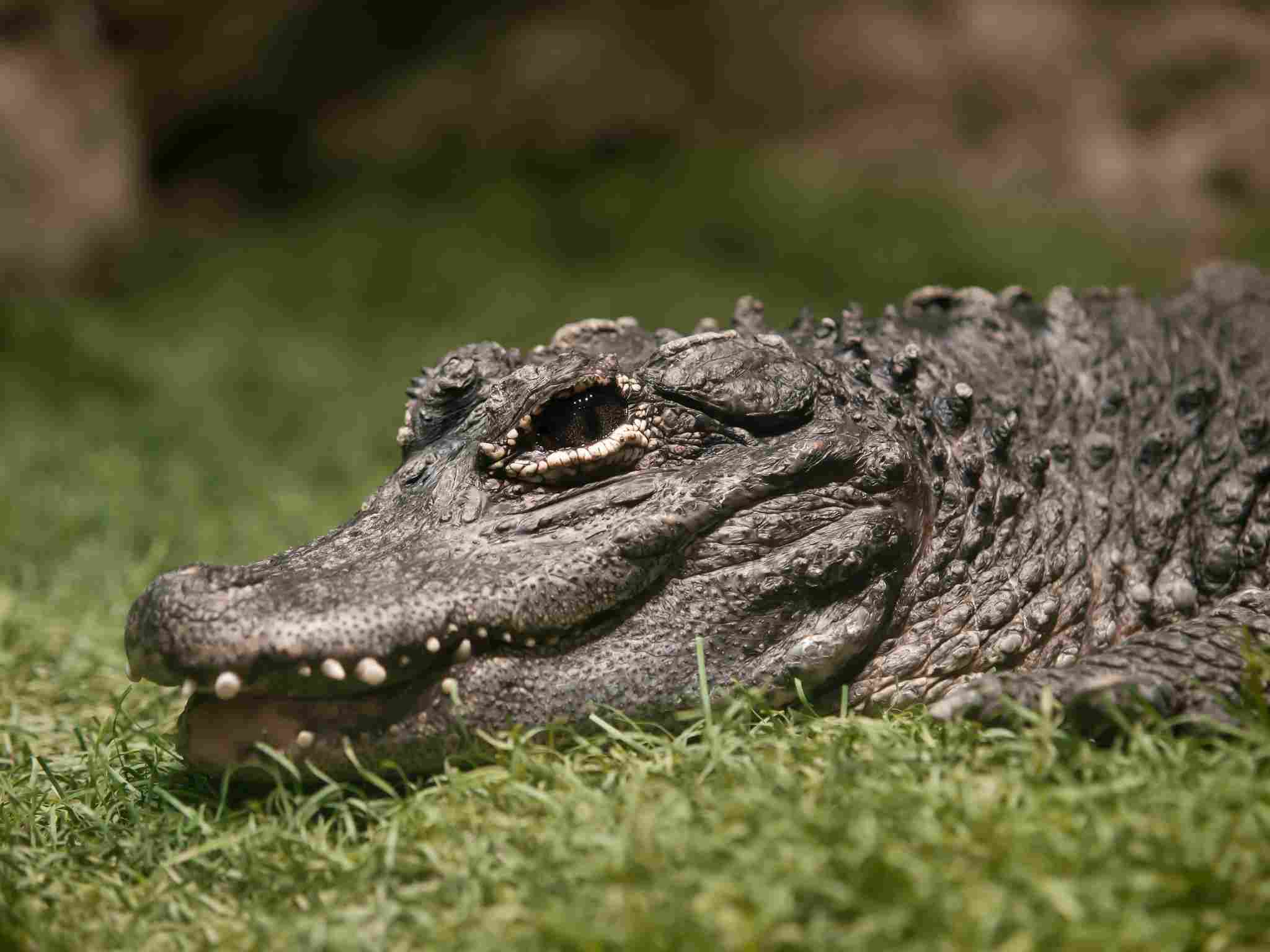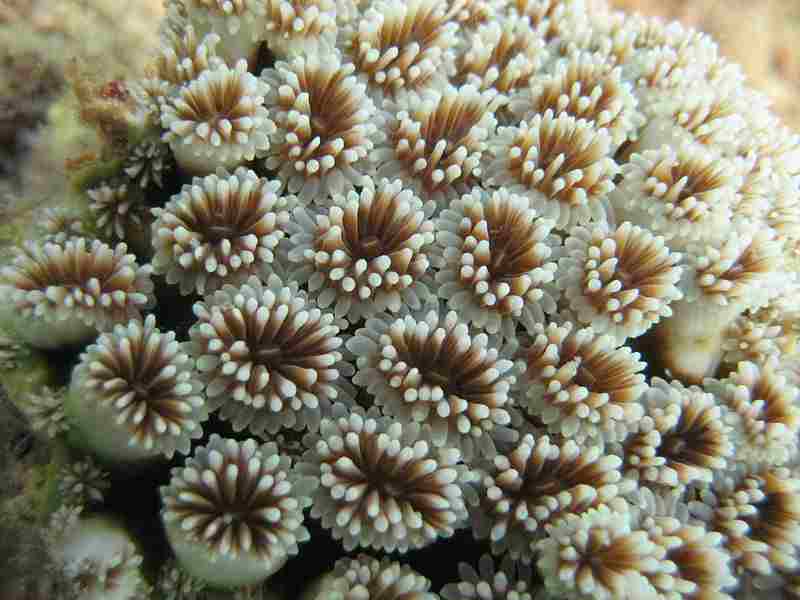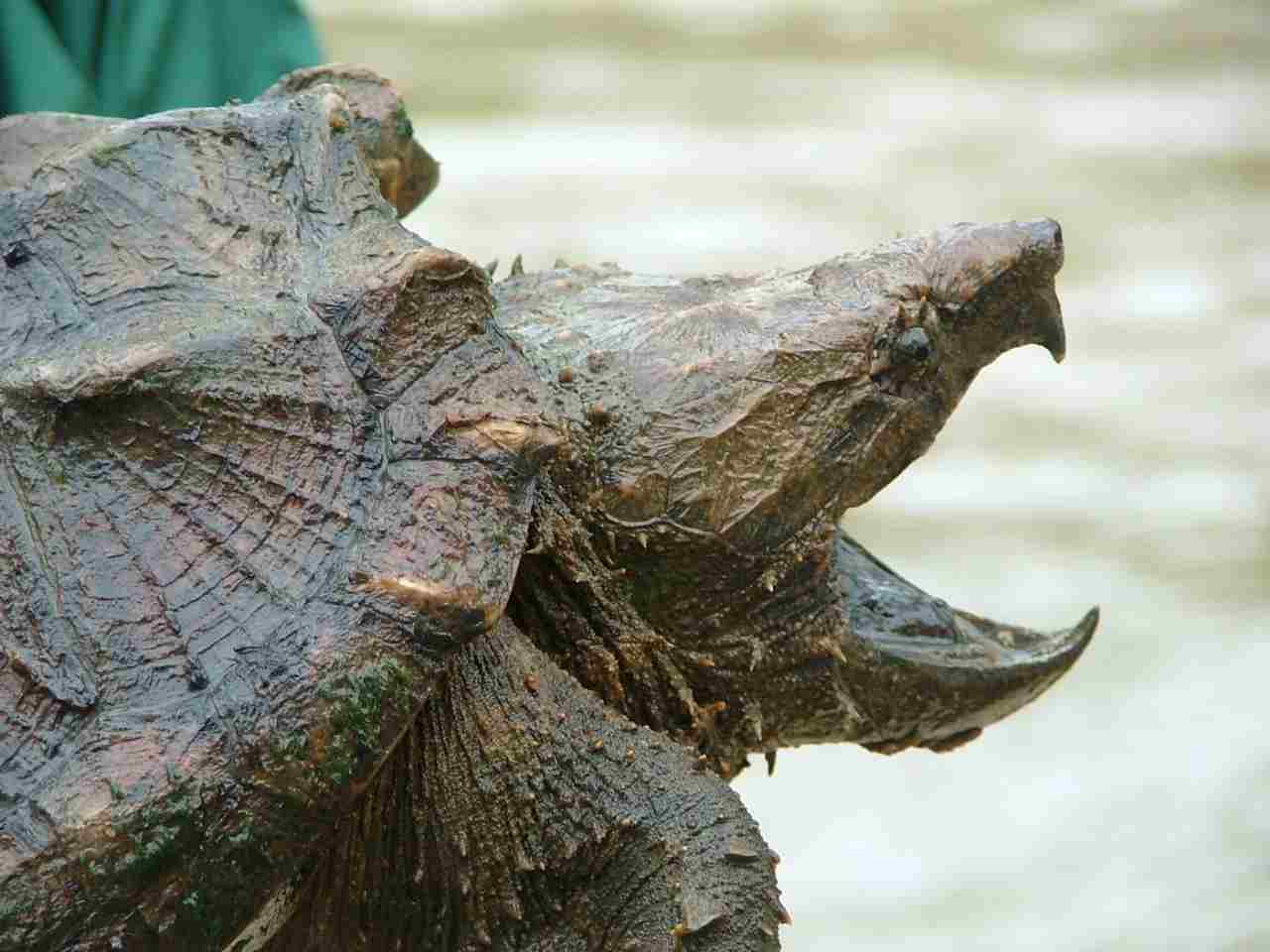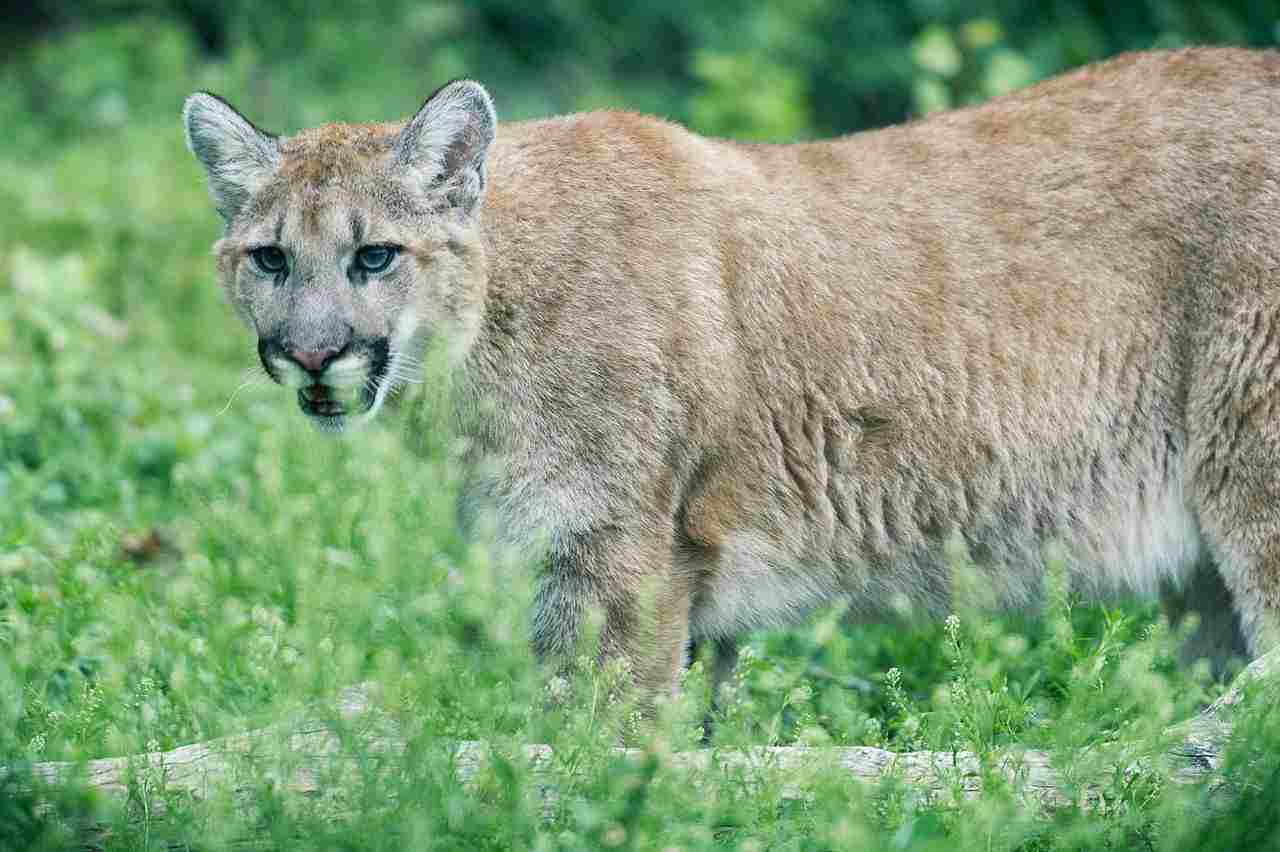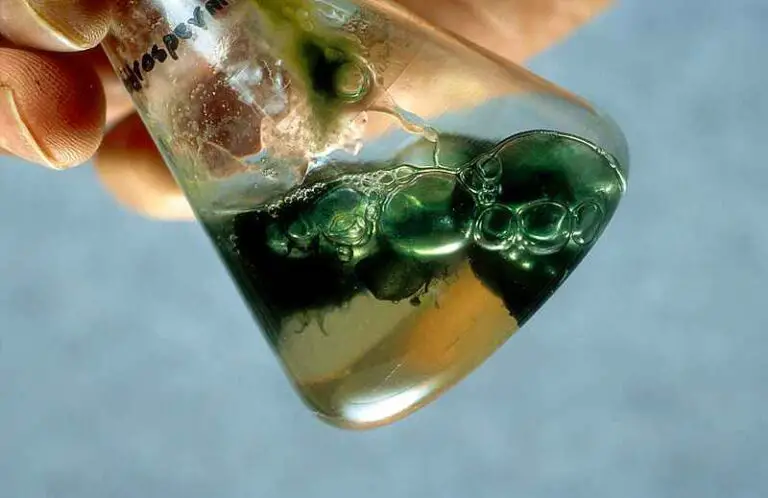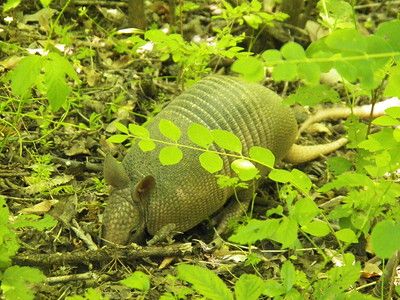23+ Most Dangerous Animals In Texas And Their Characteristics
Examples of dangerous animals in Texas are the Western Diamondback Rattlesnake, which has potent hemotoxins; the Coral Snake, a highly venomous snake with neurotoxins; and the Cottonmouth, another venomous snake found near water bodies. Other dangerous animals include the American Alligator, a large reptile with a powerful bite; the Black Widow Spider, known for its neurotoxic venom; and the Brown Recluse Spider, whose bite can cause severe tissue necrosis. Larger animals like the Mountain Lion (Cougar) and Feral Hogs are also considered dangerous due to their size and aggressive behavior.
1. Western Diamondback Rattlesnake
The Western Diamondback Rattlesnake (Crotalus atrox) is one of the most recognizable and potentially dangerous snakes in Texas. Known for its distinct diamond-shaped patterns along its back and the iconic rattle at the tip of its tail, this venomous reptile is found in a variety of habitats, including deserts, grasslands, and forests. The Western Diamondback’s venom contains a potent mix of hemotoxins, which can cause severe tissue damage, intense pain, and in some cases, can be life-threatening. Though generally not aggressive, the snake will use its rattle as a warning signal when threatened, indicating that it’s ready to strike if necessary. Encountering this snake in the wild requires caution and respect, as it plays a vital role in the ecosystem by controlling rodent populations. If bitten, immediate medical attention is crucial to mitigate the effects of the venom.
2. Coral Snake
The Coral Snake (Micrurus tener) is a highly venomous snake found in Texas, distinguished by its vibrant red, yellow, and black bands. Known for its neurotoxic venom, which attacks the nervous system, a bite from a coral snake can be life-threatening if not treated quickly. Despite its potent venom, the coral snake is relatively shy and tends to avoid human interaction, preferring to hide under rocks or in leaf litter. The classic rhyme “Red touches yellow, kill a fellow; red touches black, you’re okay, Jack” helps differentiate it from non-venomous mimic species like the milk snake. Given its reclusive nature, coral snake bites are rare, but if bitten, immediate medical attention is essential.
3. Cottonmouth (Water Moccasin)
The Cottonmouth (Agkistrodon piscivorus), also known as the Water Moccasin, is a venomous snake native to Texas, often found near bodies of water like swamps, rivers, and lakes. It gets its name from the stark white interior of its mouth, which it displays as a warning when threatened. The Cottonmouth’s venom contains hemotoxins, capable of causing severe tissue damage and, in some cases, systemic effects. Although its reputation for aggression is often exaggerated, this snake should be approached with caution, especially when encountered in its natural aquatic habitat. If bitten, prompt medical attention is crucial to avoid severe complications.
4. Copperhead
The Copperhead (Agkistrodon contortrix) is a venomous snake commonly found in Texas, known for its distinctive copper-colored head and patterned body. It prefers wooded areas, rocky outcrops, and dense vegetation, making it a common sight in rural parts of the state. Copperhead venom contains hemotoxins, leading to intense pain and localized tissue damage, though it is generally less potent than that of some other venomous snakes. The Copperhead’s bite can be dangerous, particularly to children, the elderly, or those with compromised immune systems. Despite its venomous nature, the Copperhead is not typically aggressive and will usually strike only when threatened or provoked.
5. Texas Horned Lizard
The Texas Horned Lizard (Phrynosoma cornutum), commonly known as the “horny toad,” is a unique reptile found in Texas, easily recognizable by its spiky horns and flattened body. Although it looks intimidating, this lizard is not venomous and poses little danger to humans. However, it has a fascinating defense mechanism: when threatened, it can squirt blood from its eyes to deter predators. Texas Horned Lizards primarily feed on ants, especially harvester ants, which makes them beneficial for controlling insect populations. Despite their harmless nature, these lizards are protected in Texas due to habitat loss and declining populations.
6. American Alligator
The American Alligator (Alligator mississippiensis) is a formidable reptile found in the marshes, swamps, and rivers of Texas. It can grow to impressive lengths, with males reaching over 13 feet and females slightly smaller. Alligators are apex predators with a powerful bite, capable of taking down large prey. Although they are typically shy and avoid humans, alligators can become dangerous if provoked or if they lose their natural fear of people due to feeding or encroachment into their territory. It’s essential to maintain a safe distance and never feed alligators. Attacks on humans are rare but can be severe when they occur.
7. Bobcat
The Bobcat (Lynx rufus) is a medium-sized wild cat found throughout Texas, recognizable by its tufted ears, short tail, and spotted fur. These elusive predators are generally not a threat to humans but can pose a danger to pets and livestock. Bobcats are skilled hunters, preying on rabbits, rodents, and small deer. They are highly adaptable, living in various habitats, from forests and deserts to suburban areas. While attacks on humans are extremely rare, they can occur if the animal feels cornered or is rabid. It’s best to avoid approaching or feeding these animals in the wild.
8. Mountain Lion (Cougar)
The Mountain Lion (Puma concolor), also known as the Cougar, is a large and powerful predator found in parts of Texas, particularly in the western regions. Capable of reaching up to 200 pounds, these solitary cats are apex predators, preying on deer and other large mammals. Although encounters with humans are infrequent, they can be dangerous when they occur, especially if the lion feels threatened or is protecting its territory. Mountain lions are known for their stealth and agility, often stalking prey before launching a surprise attack. If you encounter a mountain lion in the wild, the best approach is to stay calm, make yourself look larger, and avoid running.
9. Feral Hog
Feral hogs (Sus scrofa) are invasive and highly destructive animals found throughout Texas. They can grow to large sizes, with some males weighing over 300 pounds, and are known for their aggressive behavior and tusks, which can cause significant injury. Feral hogs pose a considerable threat to agriculture and native ecosystems due to their voracious appetites and rooting behavior. They can be dangerous to humans if provoked or cornered, as they may charge with considerable force. Feral hog populations are difficult to control, requiring coordinated management efforts to reduce their impact on the environment and human safety.
10. Coyote
Coyotes (Canis latrans) are highly adaptable canids found throughout Texas, often in urban and suburban areas. Known for their intelligence and resourcefulness, coyotes are typically wary of humans but can pose a threat to pets and livestock. They are opportunistic feeders, eating a wide range of food, from small mammals to fruit and garbage. Although coyote attacks on humans are rare, they can happen, especially if the coyote has lost its fear of people due to feeding or encroachment. If encountering a coyote, make loud noises and stand your ground to discourage it from approaching.
11. Black Widow Spider
The Black Widow Spider (Latrodectus mactans) is a venomous arachnid commonly found in Texas, known for its shiny black body and red hourglass marking on the underside of its abdomen. Its venom is a potent neurotoxin, causing intense pain, muscle cramps, and other systemic symptoms. Although rarely fatal, a black widow bite requires prompt medical attention to alleviate symptoms and prevent complications. Black widow spiders typically prefer dark, undisturbed areas like woodpiles, sheds, and garages. Despite their fearsome reputation, black widows are generally not aggressive and bite only when threatened or disturbed.
12. Brown Recluse Spider
The Brown Recluse Spider (Loxosceles reclusa) is another venomous arachnid found in Texas, distinguished by its brown color and distinctive violin-shaped marking on its back. Its venom contains cytotoxins, which can cause severe tissue necrosis at the bite site, leading to painful sores and, in some cases, significant medical complications. Brown recluse spiders prefer quiet, undisturbed areas, such as closets and attics, and tend to avoid human contact. Bites are relatively rare, but if bitten, it’s crucial to seek medical attention to manage potential complications and reduce the risk of severe tissue damage.
13. Texas Red-Headed Centipede

The Texas Red-Headed Centipede (Scolopendra heros) is a large and intimidating centipede species found in Texas. It can grow up to 8 inches long, with a vibrant red head and black or dark blue body. This centipede has venomous fangs capable of delivering a painful bite, causing localized swelling, intense pain, and, in some cases, mild systemic symptoms like nausea and dizziness. Although not generally dangerous to humans, its bite can be extremely painful and requires medical attention if severe symptoms develop. The Texas Red-Headed Centipede is primarily found in rocky areas and wooded habitats, where it hunts for insects and small vertebrates.
14. Scorpions (like the Striped Bark Scorpion)
Scorpions are common in Texas, with the Striped Bark Scorpion (Centruroides vittatus) being the most widespread species. These arachnids have a distinct tail with a venomous stinger, used to subdue prey and defend against threats. While the venom is usually not lethal to humans, a scorpion sting can cause intense pain, swelling, and other localized symptoms. In rare cases, especially for individuals with allergies, a scorpion sting can lead to more severe reactions. Striped Bark Scorpions are often found in warm, dry areas, and can sometimes enter homes in search of food or shelter. If stung by a scorpion, seeking medical advice is advisable, especially if severe symptoms occur.
15. Red Imported Fire Ant
The Red Imported Fire Ant (Solenopsis invicta) is an invasive and aggressive species of ant found throughout Texas. Known for its painful sting, which causes intense burning and, in some cases, severe allergic reactions, the fire ant can pose a threat to humans, pets, and wildlife. Fire ants build large mounds in open areas and can quickly swarm and sting when disturbed. In addition to the physical pain caused by their sting, fire ants are destructive to agriculture and infrastructure, causing damage to crops and electrical equipment. Managing fire ant populations requires ongoing efforts to prevent their spread and minimize their impact on the environment and public health.
16. Bison
Bison (Bison bison), often referred to as American buffalo, are massive herbivores once roaming widely across Texas. Despite their generally calm demeanor, bison can be dangerous due to their sheer size and strength. Adult bison can weigh over a ton, and when provoked or threatened, they can charge at high speeds, causing significant injury. Bison herds are often protective of their young, so it’s crucial to keep a safe distance and avoid sudden movements around them. Although they were nearly driven to extinction in the 19th century, bison populations have rebounded thanks to conservation efforts, with controlled herds found in various state and national parks across Texas.
17. Great Horned Owl
The Great Horned Owl (Bubo virginianus) is a large and powerful bird of prey found throughout Texas. It is characterized by its distinctive ear tufts, large yellow eyes, and formidable talons. Great Horned Owls are skilled hunters, preying on a variety of small to medium-sized animals, including rodents, birds, and rabbits. Although they are not generally dangerous to humans, their strong talons and beak can cause injury if the owl feels threatened or is protecting its nest. These owls are nocturnal and play a crucial role in controlling rodent populations in their habitats.
18. Golden Eagle
The Golden Eagle (Aquila chrysaetos) is a majestic bird of prey found in Texas, primarily in mountainous and open areas. With its powerful wingspan and keen eyesight, the Golden Eagle is one of the top predators in its environment, capable of hunting large prey such as rabbits, deer fawns, and other birds. Although rare, attacks on humans can occur if the eagle feels threatened or its nesting site is disturbed. Golden Eagles are protected by federal law, making it illegal to harm or disturb them. Their impressive hunting skills and strength make them fascinating yet potentially dangerous animals to encounter.
19. Bull Shark
The Bull Shark (Carcharhinus leucas) is a formidable predator found in Texas’s coastal waters and even in some rivers. Known for its aggressive behavior and adaptability to freshwater environments, the Bull Shark is responsible for a significant number of shark attacks worldwide. With a robust body and powerful jaws, this shark can pose a threat to swimmers and divers, especially in murky waters where visibility is low. Bull Sharks are known to inhabit brackish and freshwater areas, making them unique among shark species. To minimize risks, it’s important to follow safety guidelines when swimming in shark-prone areas.
20. Texas Longhorn Cattle
Texas Longhorn Cattle are iconic symbols of the state, known for their distinctive long horns that can span several feet. Although primarily bred for their hardiness and adaptability, Texas Longhorns can be dangerous if provoked or if they feel threatened. Their large size and sharp horns make them potentially hazardous, especially during breeding or when protecting calves. Generally, these cattle are docile and well-behaved, but it’s crucial to exercise caution when approaching them, especially in open ranges or near ranches where they are kept. Proper handling and respect for their space are key to preventing dangerous encounters.
21. Killer Bees (Africanized Honeybees)
Killer Bees, or Africanized Honeybees, are an aggressive hybrid species found in Texas. They are known for their defensive swarming behavior, which can be deadly in large numbers. Unlike other bees, Killer Bees are more prone to attack when disturbed and can pursue perceived threats for considerable distances. Their venom is similar to that of other honeybees, but the sheer volume of stings in a swarm attack makes them particularly dangerous. Encounters with Killer Bees require caution, and it’s crucial to avoid disturbing their hives or nesting sites. If attacked, seeking shelter indoors and alerting authorities is the best course of action.
22. Wild Turkey
Wild Turkeys (Meleagris gallopavo) are large birds found in Texas’s forests and open areas. While generally not dangerous to humans, they can become aggressive during mating season or when defending their young. Male turkeys, known as toms, have sharp spurs on their legs, which they use in territorial disputes with other turkeys. These spurs can cause injury if the turkey becomes aggressive towards humans. Wild Turkeys play an essential role in the ecosystem, helping control insect populations and spreading seeds through their foraging behavior. It’s best to observe them from a safe distance to avoid confrontations.
23. Striped Skunk
The Striped Skunk (Mephitis mephitis) is a common animal in Texas, known for its distinctive black and white stripes and powerful odor. While not generally aggressive, skunks are equipped with scent glands that can spray a foul-smelling liquid when threatened, which can cause temporary blindness and respiratory irritation. Skunks can also carry rabies, making them a potential health risk if they bite or scratch. They are primarily nocturnal and prefer to avoid confrontation, but it’s important to give them space if encountered. If a skunk is acting erratically or aggressively, it could be a sign of illness, and authorities should be notified.
24. Gila Monster
The Gila Monster (Heloderma suspectum) is a venomous lizard occasionally found in western Texas. It has a distinctive orange and black pattern and a thick, stocky body. The Gila Monster’s bite delivers venom through grooves in its teeth, causing intense pain, swelling, and other symptoms. Although not typically lethal to humans, the bite can be severe and requires immediate medical attention. Gila Monsters are generally slow-moving and not aggressive, preferring to avoid human contact. They are protected by law due to their declining populations, and it’s illegal to harm or capture them. If encountered in the wild, it’s best to observe from a safe distance and avoid any interactions.
| Animal | Description |
| Western Diamondback Rattlesnake |
Venomous snake with potent hemotoxins, found in various habitats, warns with its rattle.
|
| Coral Snake |
Highly venomous with neurotoxins, recognizable by its red, yellow, and black bands.
|
| Cottonmouth (Water Moccasin) |
Venomous snake with white-lined mouth, found near bodies of water, known for hemotoxin venom.
|
| Copperhead |
Venomous snake with copper-colored head and patterned body, prefers wooded areas.
|
| Texas Horned Lizard |
Spiky lizard known for squirting blood from its eyes, not venomous, feeds on ants.
|
| American Alligator |
Large reptile with a powerful bite, found in marshes, swamps, and rivers, apex predator.
|
| Bobcat |
Medium-sized wild cat, skilled hunter, can be a danger to pets and livestock.
|
| Mountain Lion (Cougar) |
Large predator, capable of attacking humans, found in western Texas.
|
| Feral Hog |
Aggressive and destructive, with large tusks, invasive species causing significant damage.
|
| Coyote |
Adaptable canid, generally avoids humans but can pose a threat to pets and livestock.
|
| Black Widow Spider |
Venomous spider with neurotoxin, known for its black body with red hourglass marking.
|
| Brown Recluse Spider |
Venomous spider with cytotoxins, characterized by its violin-shaped marking.
|
| Texas Red-Headed Centipede |
Large centipede with venomous fangs, causing intense pain and swelling.
|
| Scorpions (like the Striped Bark Scorpion) |
Venomous arachnid, known for its stinger, found in warm, dry areas.
|
| Red Imported Fire Ant |
Aggressive ant with a painful sting, invasive species causing damage to crops and equipment.
|
| Bison |
Large herbivore, can charge if threatened, protected in parks and reserves.
|
| Great Horned Owl |
Powerful bird of prey, has strong talons, and is known for its ear tufts.
|
| Golden Eagle |
Large bird of prey, capable of attacking humans if provoked, apex predator in its environment.
|
| Bull Shark |
Aggressive shark found in coastal and freshwater areas, responsible for a number of shark attacks.
|
| Texas Longhorn Cattle |
Iconic cattle with long horns, can be dangerous if provoked.
|
| Killer Bees (Africanized Honeybees) |
Aggressive hybrid bee species, known for swarming and pursuing threats.
|
| Wild Turkey |
Large bird, can become aggressive during mating season or when protecting young.
|
| Striped Skunk |
Known for its foul-smelling spray, can carry rabies, typically not aggressive.
|
| Gila Monster |
Venomous lizard with a distinctive pattern, slow-moving, and protected by law.
|

